The Orang Asli (OA) are some of the most impoverished communities living in Malaysia. Relying on ad-hoc work for income, many of them struggled to make ends meet during the Movement Control Order. With little to no savings, many OA villagers had to depend heavily on food aid. This lack of adequate food not only results in hunger and food insecurity but also malnutrition, particularly in children.
Even though many OA families recognise the importance of food farming, very few are successful as many of them face daunting challenges that hinder them from farming successfully. A common issue is the dry and compacted soil that’s often exacerbated by long drought seasons in the area of Rompin and Pekan in Pahang.
“The soil here is very challenging. It gets worse when it doesn’t rain. Look over here, the soil is in clumps , it’s very hard and many of the plants don’t live. “
Rasa, a villager from Kg. Bukit Biru
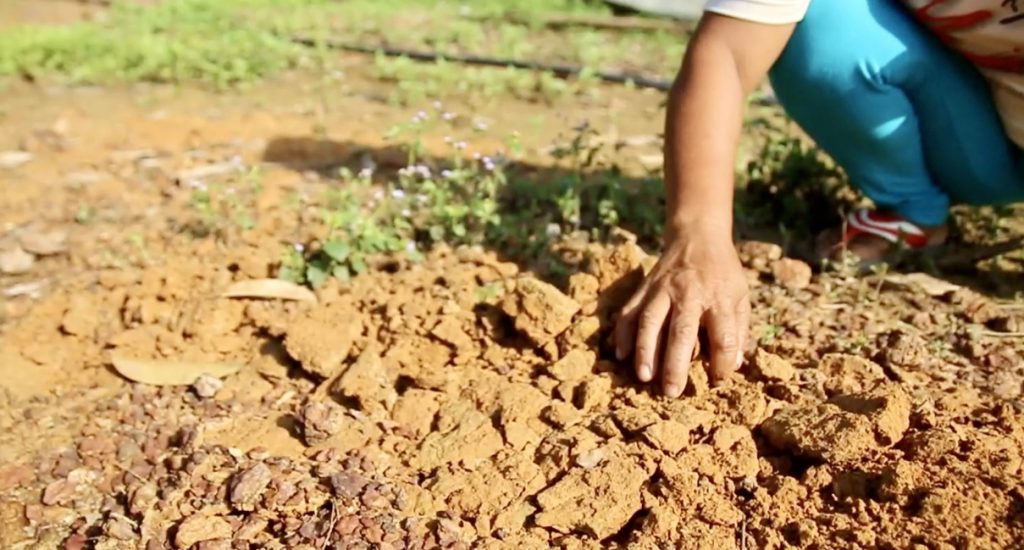
Setik digging the dense soil in her backyard 
Setik holding a clump of soil
Rasa’s sentiment is commonly shared by other villagers, such as Setik, a mother of four children from Kg. Cenodong who shows us the condition of the soil surrounding her home. Apart from this, many OA villagers also lack the capital to buy seedlings, tools and irrigation systems. Thus, many resorted to planting drought-resistant crops such as cassava and sweet potatoes that do not provide enough nutrition for themselves and their family.
“We only plant what our ancestors used to plant such as sweet potatoes, but we will just leave them to grow by itself. We don’t know how to take care of them. “
Setik, a villager from Kg. Cenodong
Food security is crucial to building resilient OA communities; It not only provides them with adequate nutrition but also protects them from future shocks.
In August 2020, we began studying the challenges faced by the Orang Asli farmers. After working and learning with them on pilot farm plots, we officially kickstarted the OA-Eco Farm programme in 6 OA villages in November 2020. This programme provides “hands-on training, subsidies such as tools and seedlings, as well as coaching to help them succeed in food farming,” says Dr. Teh, our CEO who led this project himself.

Focus group with villagers to learn more about their farming challenges 
Hands-on training on sustainable farming within the village
As the trainings are carried out within the villages itself, we provided one-on-one coaching and guidance to address each villagers’ needs and challenges. From learning how to regenerate the soil by mulching to addressing pests, 38 farm plots were transformed from dry patches of bare soil to flourishing farms filled with vegetables and fruits.
Pak Long, an elderly from Kg. Teraling has been dedicated to growing his food farm. Attending every training and coaching session, Pak Long learned how to regenerate his soil and no longer uses pesticides and chemical fertilisers in his farm. He is now growing over 20 different types of vegetables and fruits, including long beans, chilli, bitter gourd and okra.

Pak Long, a villager from Kg. Teraling tending to his farm 
Pak Long’s daughter (front) and her cousins help water the plants in his farm
“(They) showed us how to farm, how to regenerate the soil by using leaves to cover and moisten the soil to make it more fertile. So, we followed this method and it works!”
Pak Long, a villager from Kg. Teraling
Aminah, a villager from Kg. Cenodong expressed that she has learned a lot from the training and coaching sessions. Walking us around her food farm, she proceeds to show us how she now uses her hoe, subsidised by the Eco-Farm programme to till the soil before planting vegetable seedlings.

Aminah, a villager from Kg. Cenodong working in her farm 
Aminah’s daughter next to a growing brinjal plant
“Following what I learned, the soil in my farm is now healthy and fertile. They have been really helpful to us by providing us with vegetable seedlings. We often can’t afford to buy those.”
Aminah, a villager from Kg. Cenodong
Aminah’s neighbour, Rowena is also extremely keen on food farming. Harvesting a couple of different types of vegetables in her farm, Rowena invites us into her home and shows us how she would normally prepare meals for her family. As a mother of three, Rowena shares that she is very happy to be farming now as she can feed her children with a variety of vegetables to improve their nutrition.
“I feel good now that I have a vegetable farm. I don’t have to go out to buy vegetables anymore, I can just walk to my farm and harvest my own vegetables. We definitely saved some money.”
Rowena, a villager from Kg. Cenodong

Rowena harvesting vegetables in her farm 
Rowena chopping her vegetables in her kitchen 
Rowena’s bowl of cooked vegetables
As many as 38 families from 6 villages are now growing more than 10 varieties of vegetables and fruits. Many of them have already harvested their yield for consumption by their families.
By having a food farm with different types of vegetables and fruits, many OA villagers expressed happiness and relief as they no longer need to travel out of the villager to a store to buy vegetables. This alone allows them to save some of their income for the use of other essential expenses such as children’s school fees.
“I am so happy because my family and I get to eat vegetables. Right now, I have fruits and vegetables, they’re enough for my children. When my husband goes to work, he will bring the vegetables from our farm with him too.”
Wati, a villager from Kg. Jenit

Wati, a villager from Kg. Jenit harvesting her long beans 
Rasa, a villager from Kg. Bukit Biru holding the fruits of his labour in his hands
“I definitely want to continue farming. It’s not only for the benefit of my family; I want to farm more vegetables and fruits so everyone in the village can eat.”
Rasa, a villager from Kg. Bukit Biru
The crisis of Covid-19 has exposed many of the dire realities faced by the OA community, one of which is severe food insecurity. We hope our OA Eco-Farm programme will inspire more OA farmers to farm their own food to achieve self-sufficiency. This will allow them to develop greater resilience and protect themselves against future shocks like the Covid-19 pandemic for years to come.
Written by:
Lauren Chew, Communications Officer

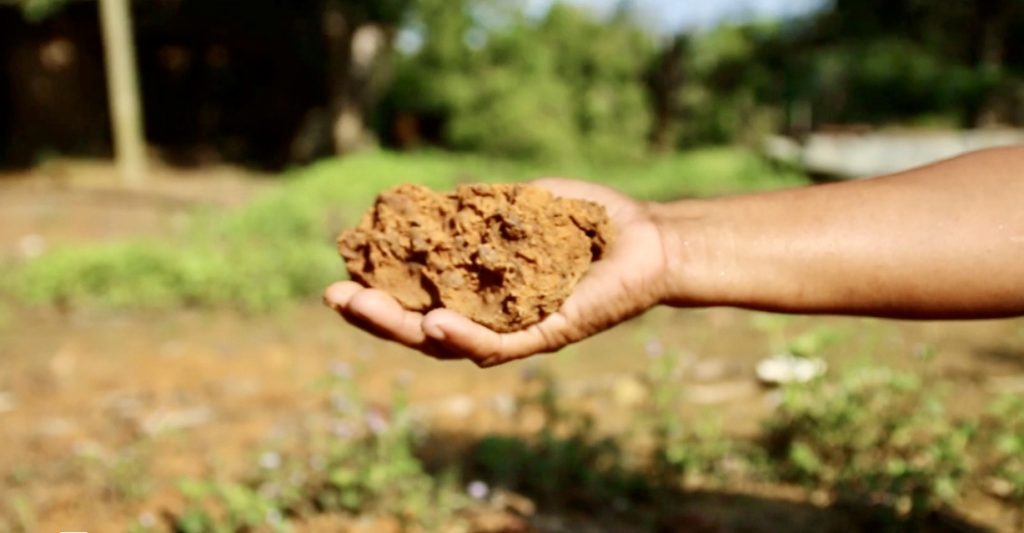
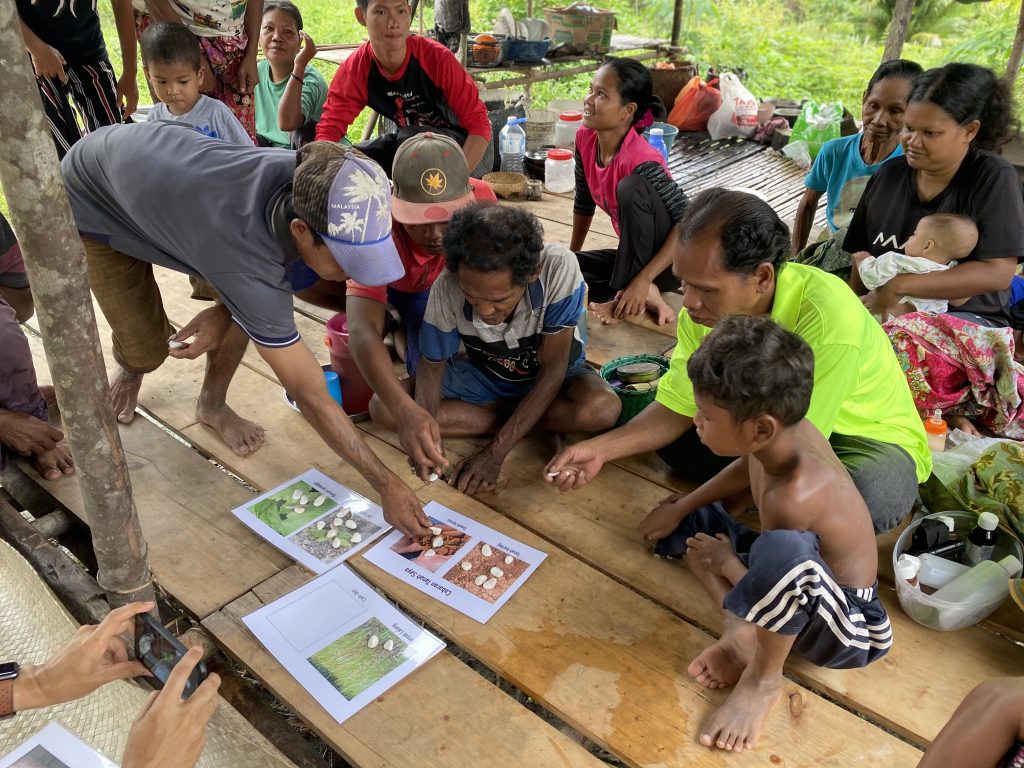
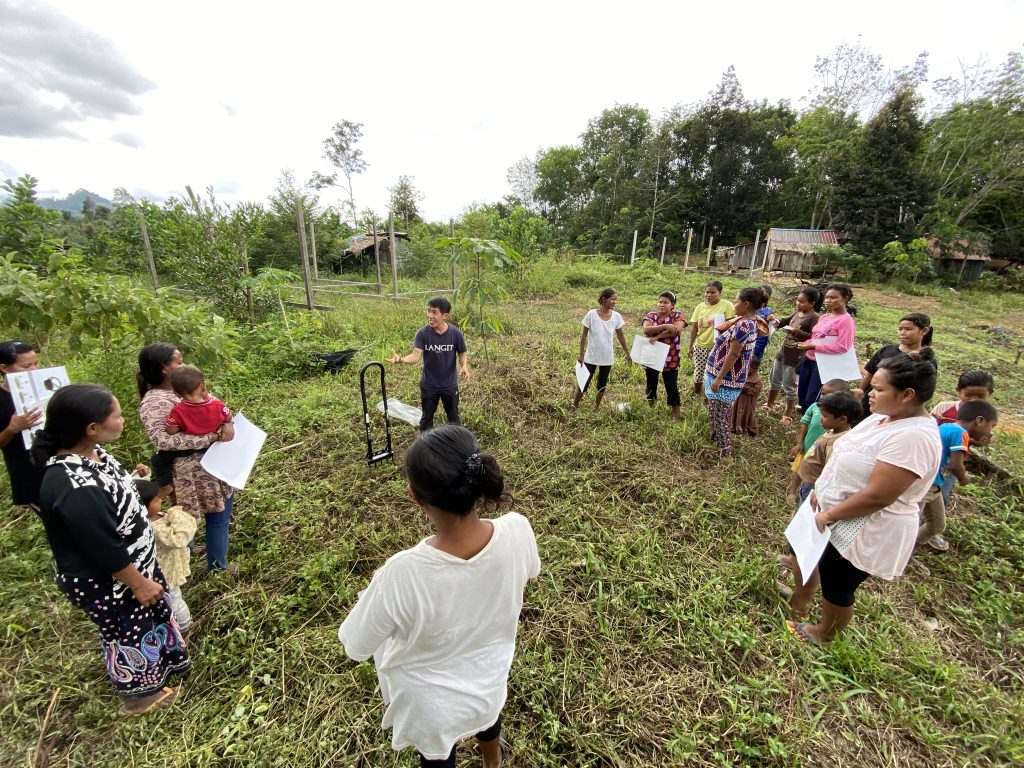

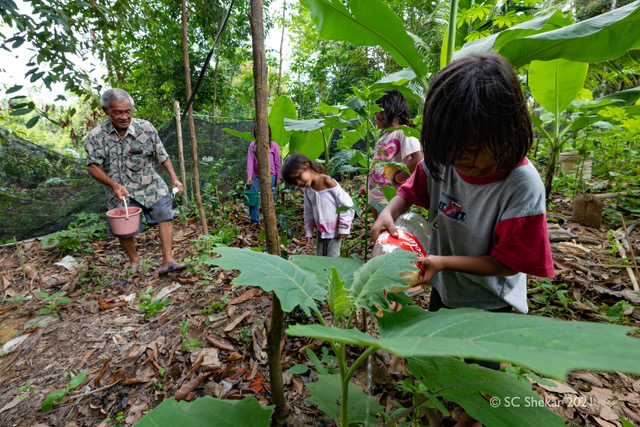
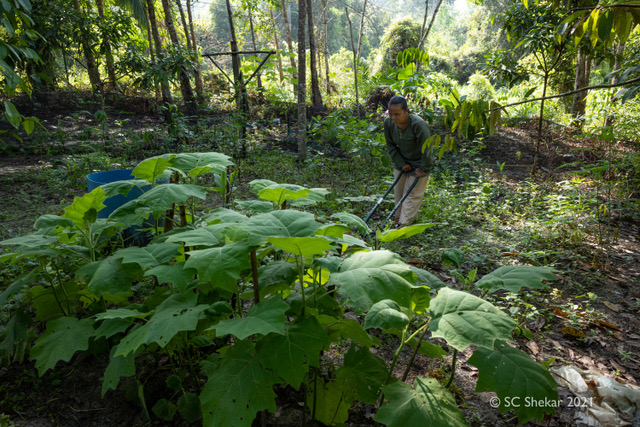
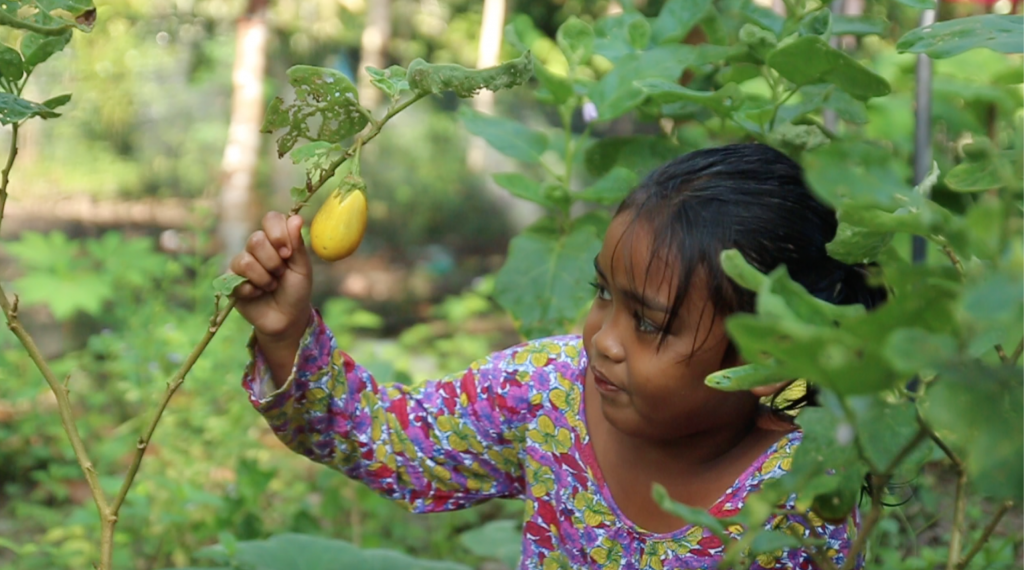
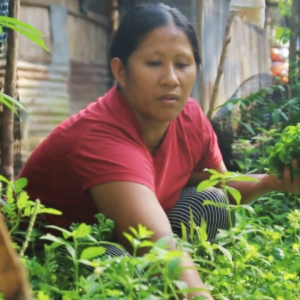
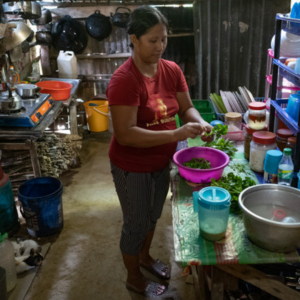
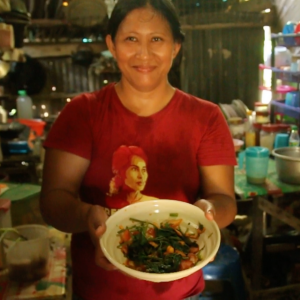
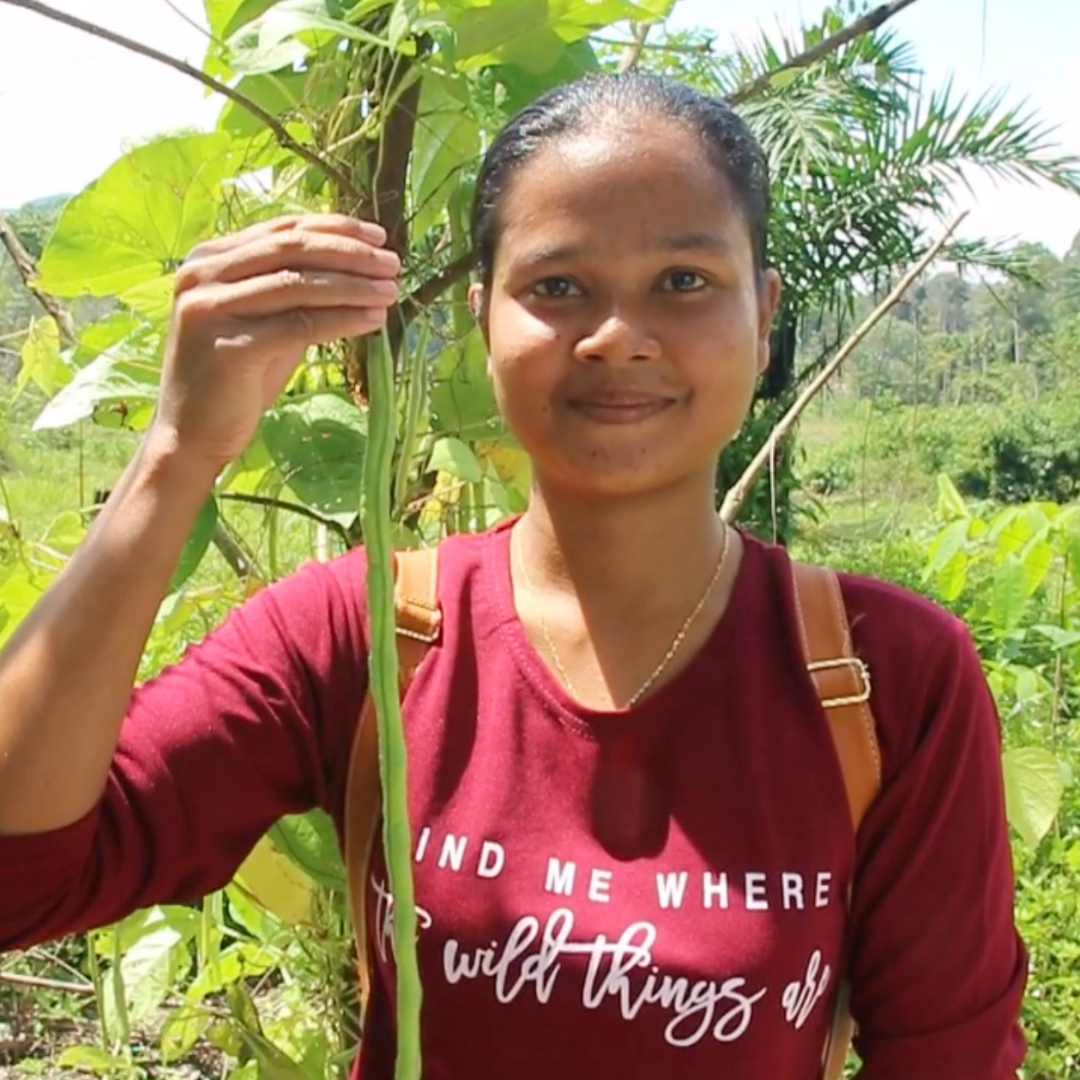







1 Comment